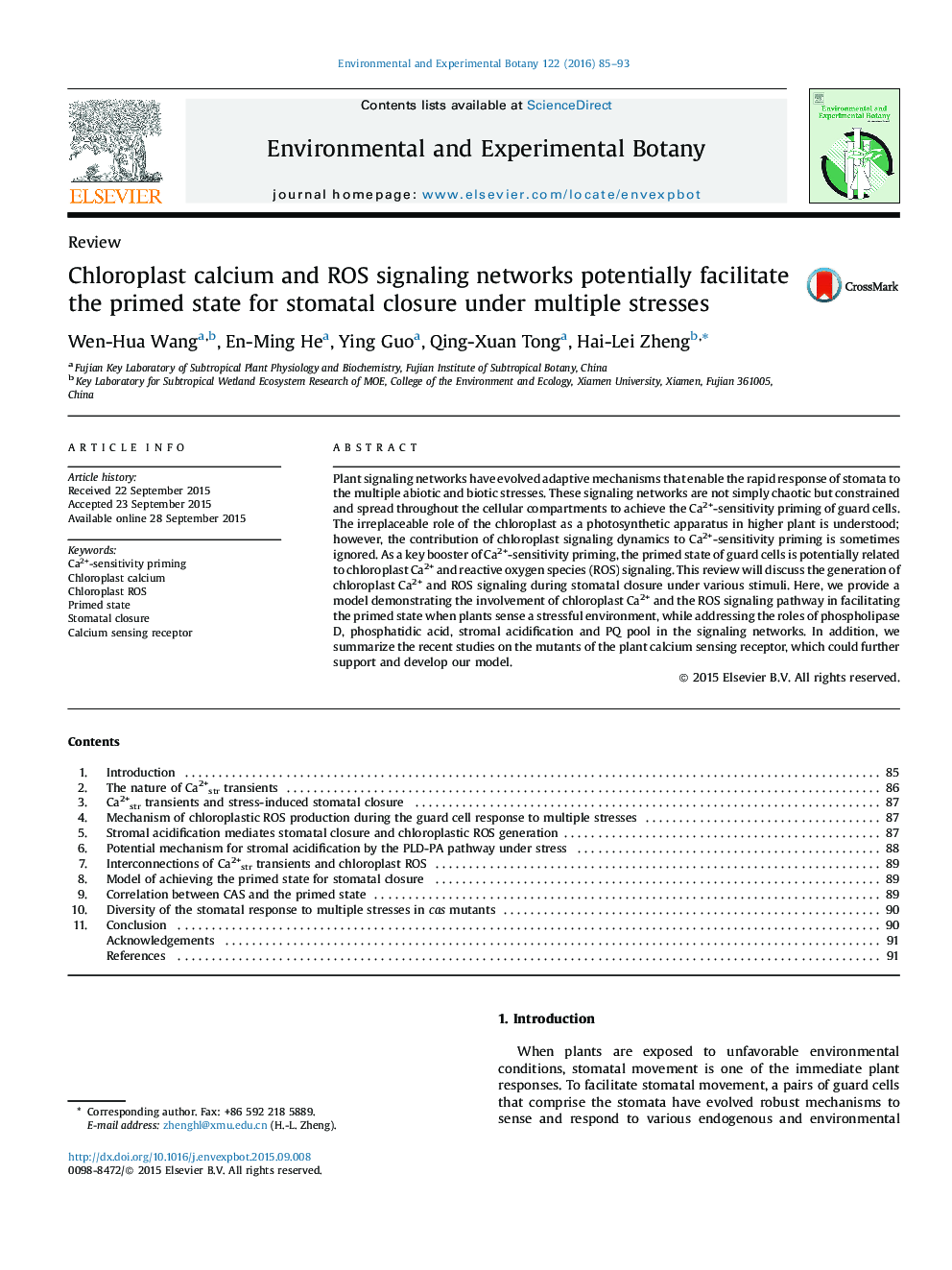| Article ID | Journal | Published Year | Pages | File Type |
|---|---|---|---|---|
| 4554166 | Environmental and Experimental Botany | 2016 | 9 Pages |
•Stomatal closure requires the primed state of guard cells.•The PQ pool-dependent chloroplastic ROS generation contributes to the primed state.•Stromal calcium signaling potentially contributes to the stress-initiated primed state.•The Ca2+-sensitivity priming of guard cells are regulated by ROS and Ca2+ crosstalk.•The ROS and Ca2+ signaling network is the major step in triggering stomatal closure.
Plant signaling networks have evolved adaptive mechanisms that enable the rapid response of stomata to the multiple abiotic and biotic stresses. These signaling networks are not simply chaotic but constrained and spread throughout the cellular compartments to achieve the Ca2+-sensitivity priming of guard cells. The irreplaceable role of the chloroplast as a photosynthetic apparatus in higher plant is understood; however, the contribution of chloroplast signaling dynamics to Ca2+-sensitivity priming is sometimes ignored. As a key booster of Ca2+-sensitivity priming, the primed state of guard cells is potentially related to chloroplast Ca2+ and reactive oxygen species (ROS) signaling. This review will discuss the generation of chloroplast Ca2+ and ROS signaling during stomatal closure under various stimuli. Here, we provide a model demonstrating the involvement of chloroplast Ca2+ and the ROS signaling pathway in facilitating the primed state when plants sense a stressful environment, while addressing the roles of phospholipase D, phosphatidic acid, stromal acidification and PQ pool in the signaling networks. In addition, we summarize the recent studies on the mutants of the plant calcium sensing receptor, which could further support and develop our model.
Graphical abstractFigure optionsDownload full-size imageDownload as PowerPoint slide
